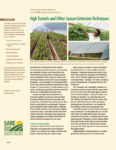 www.sare.org resources high-tunnels-and-other-season-extension-techniques
www.sare.org resources high-tunnels-and-other-season-extension-techniques
High Tunnels and Other Season Extension Techniques
...represent a lower investment than high tunnels. High Tunnels or Hoop Houses High tunnels, or hoop houses, are simple greenhouse-like structures over bare ground, without the elaborate heating and cooling...
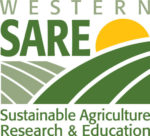 western.sare.org resources increasing-professional-knowledge-of-high-tunnels-in-alaska
western.sare.org resources increasing-professional-knowledge-of-high-tunnels-in-alaska
Increasing Professional Knowledge of High Tunnels in Alaska
...The Cooperative Extension Service Agents trained by the the High Tunnels and High Latitudes project provided a total of 19 face-to-face and distance delivered educational trainings on high tunnel use...
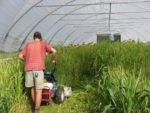 southern.sare.org resources soil-management-using-cover-crops-in-organically-managed-high-tunnels
southern.sare.org resources soil-management-using-cover-crops-in-organically-managed-high-tunnels
Soil Management Using Cover Crops in Organically Managed High Tunnels
...tunnels are typically used for season extension in the spring, fall, and winter. In the hot summer months, if no shade cloth is used to cover high tunnels, it can...
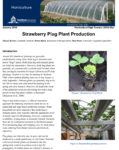 western.sare.org resources specialty-crop-production-in-high-tunnels
western.sare.org resources specialty-crop-production-in-high-tunnels
Specialty Crop Production in High Tunnels
...with this research: High Tunnel Strawberry Production.pdf 1.28 MB Strawberry Plug Plant Production.pdf 942.96 kB High Tunnel Summer Squash Production.pdf 679.51 kB Fall-bearing Raspberries in High Tunnels.pdf 470.72 kB High...
 southern.sare.org news berries-thrive-in-high-tunnels-but-be-aware-of-pests-according-to-university-of-arkansas-study
southern.sare.org news berries-thrive-in-high-tunnels-but-be-aware-of-pests-according-to-university-of-arkansas-study
Berries Thrive in High Tunnels, But Be Aware of Pests, According to University of Arkansas Study
...“The results of the study showed that high tunnels make an ideal complimentary system to field production” said Rom. Despite the production successes with high tunnels, the researchers faced challenges...
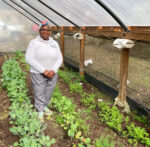 southern.sare.org news woven-shade-cloths-part-of-ipm-strategy-to-exclude-pests-from-high-tunnels
southern.sare.org news woven-shade-cloths-part-of-ipm-strategy-to-exclude-pests-from-high-tunnels
Woven Shade Cloths Part of IPM Strategy to Exclude Pests from High Tunnels
...our open fields,” said Bain. The small urban farmer isn’t the only producer across Alabama who has effectively managed pests in high tunnels through High Tunnel Pest Exclusion (HTPE) –...
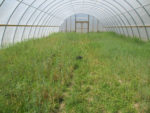 southern.sare.org news cover-crops-have-benefits-in-high-tunnels
southern.sare.org news cover-crops-have-benefits-in-high-tunnels
Cover Crops Have Benefits in High Tunnels
...crops hold moisture a lot longer in the soil and weed management is a lot better with cover crops used as compost in high tunnels.” The couple have two high...
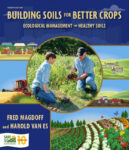 www.sare.org publications building-soils-for-better-crops analyzing-your-soil-and-crop
www.sare.org publications building-soils-for-better-crops analyzing-your-soil-and-crop
Ch 21. Analyzing Your Soil and Crop
...optimum), but some labs use optimum and high interchangeably. (High, and even very high, does not mean that the nutrient is present in toxic amounts; these categories only indicate that...
Related Results:
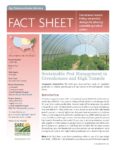 www.sare.org resources sustainable-pest-management-in-greenhouses-and-high-tunnels
www.sare.org resources sustainable-pest-management-in-greenhouses-and-high-tunnels
Sustainable Pest Management in Greenhouses and High Tunnels
...structures such as minimally heated greenhouses and unheated high tunnels. Because these season extension tools are widely used by organic and sustainable vegetable growers, SARE funded a project to study...
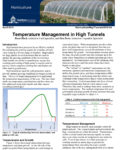 western.sare.org resources temperature-management-in-high-tunnels
western.sare.org resources temperature-management-in-high-tunnels
Temperature Management in High Tunnels
...is the key to high tunnel management. This Utah State University fact sheet spells out temperature considerations and how these are best addressed using high tunnels and other season-extending technologies....